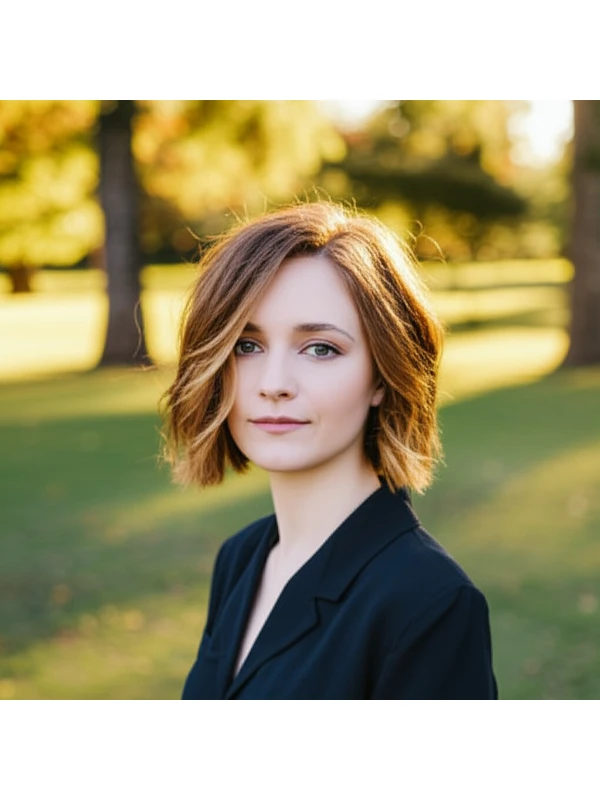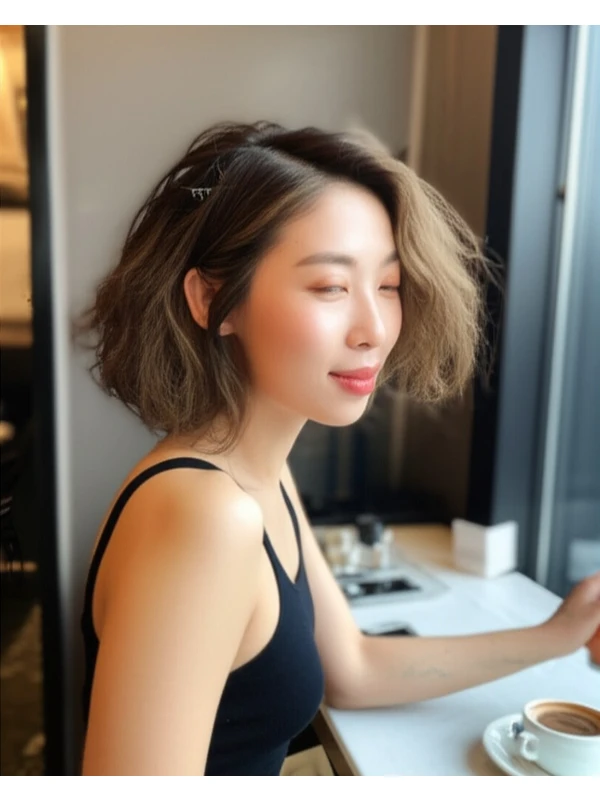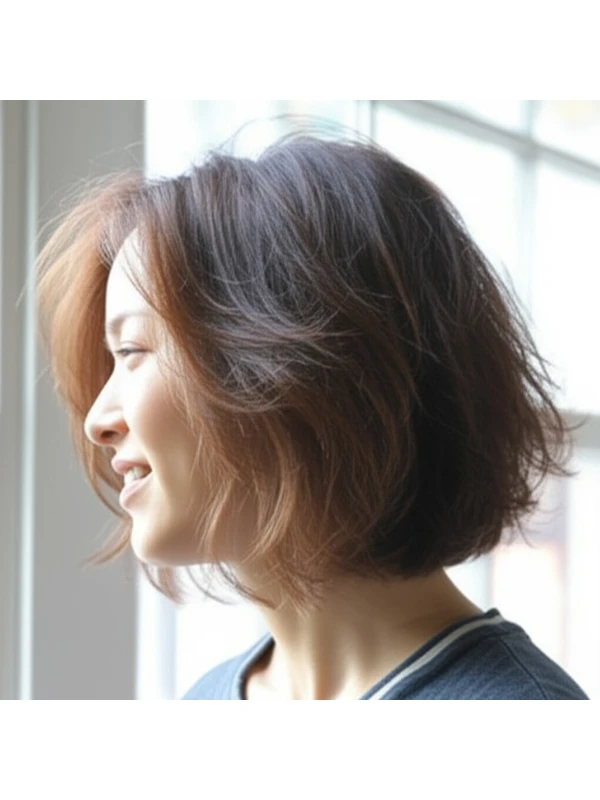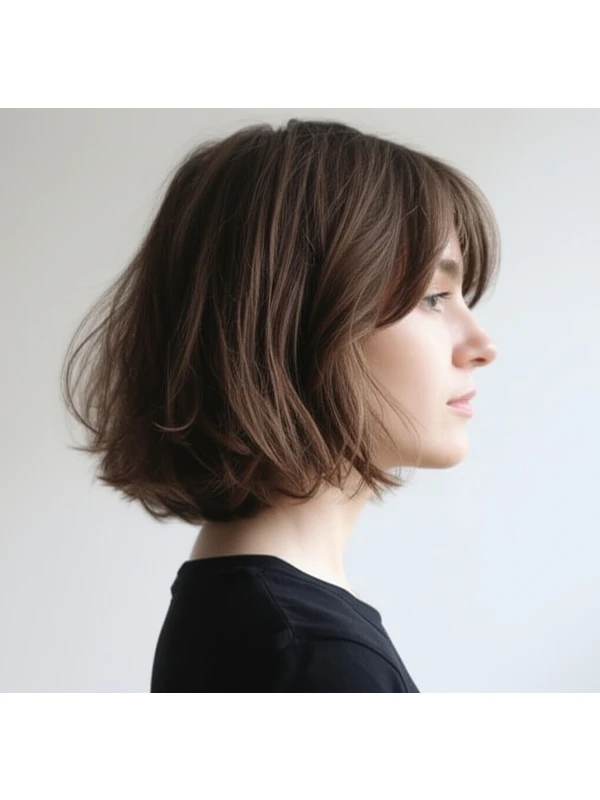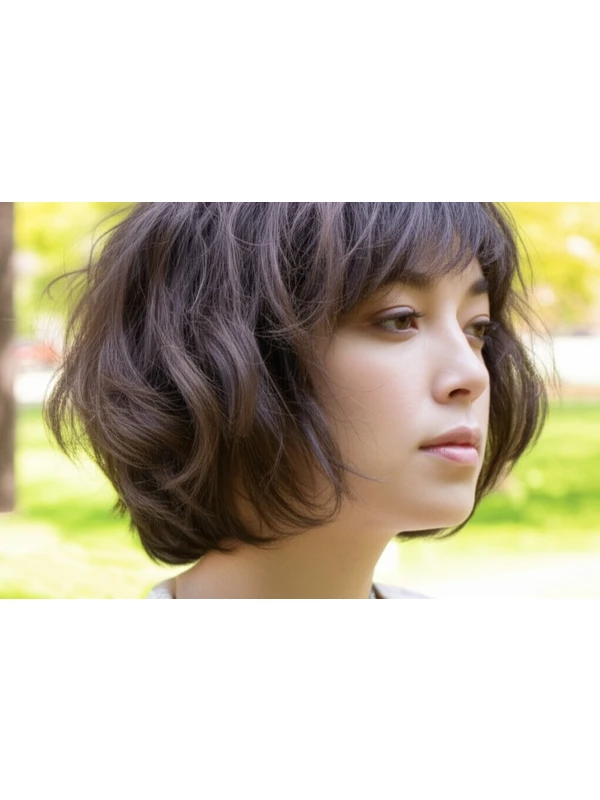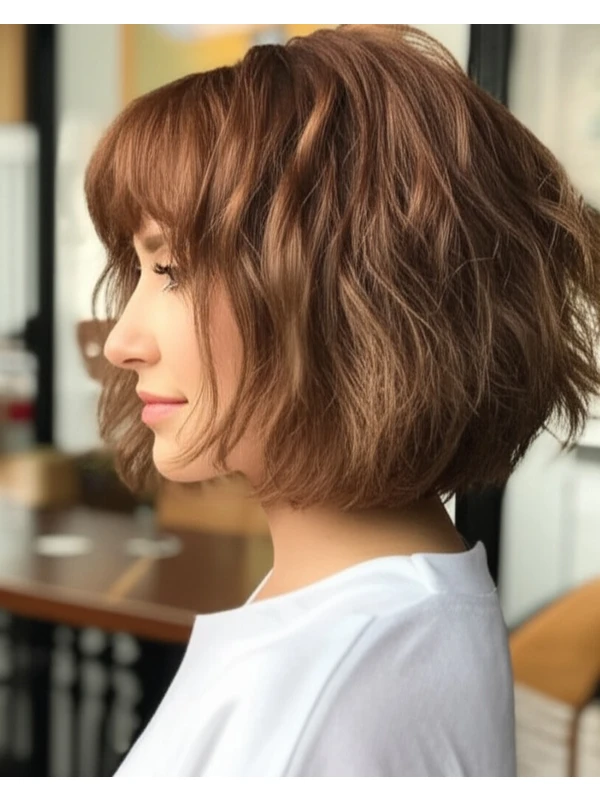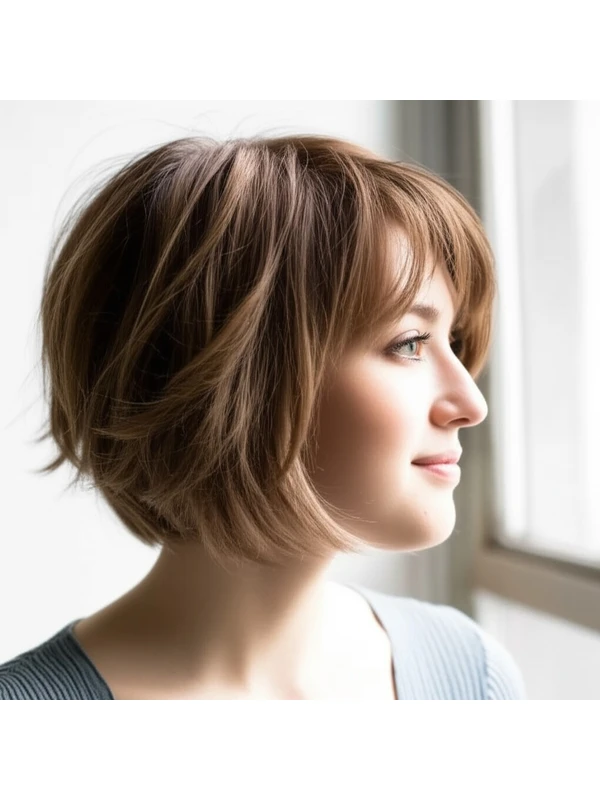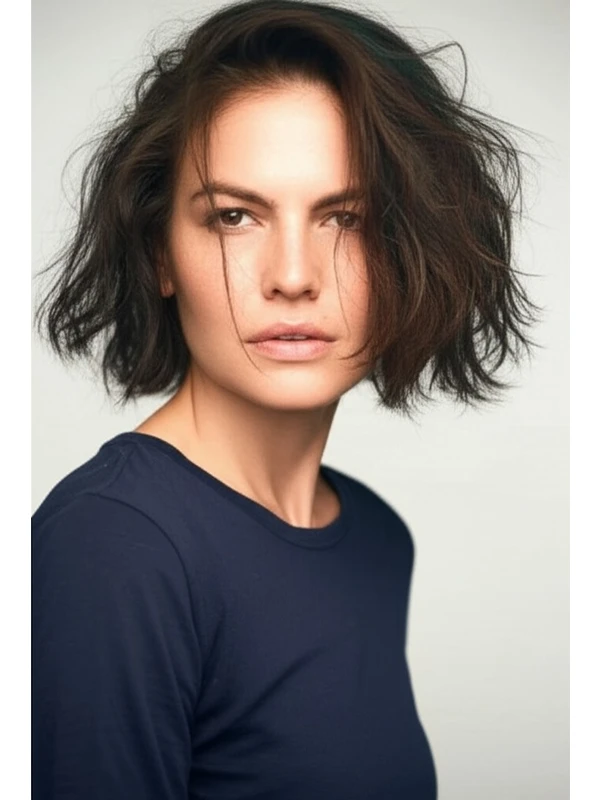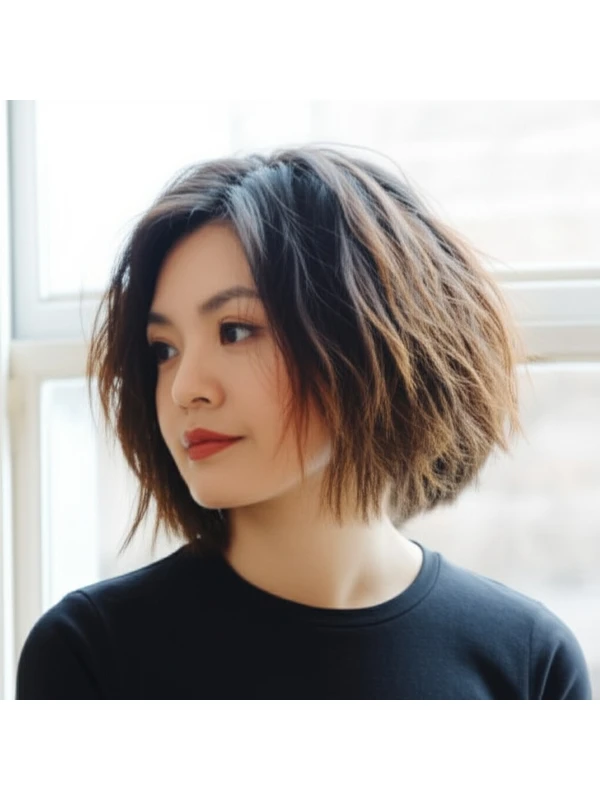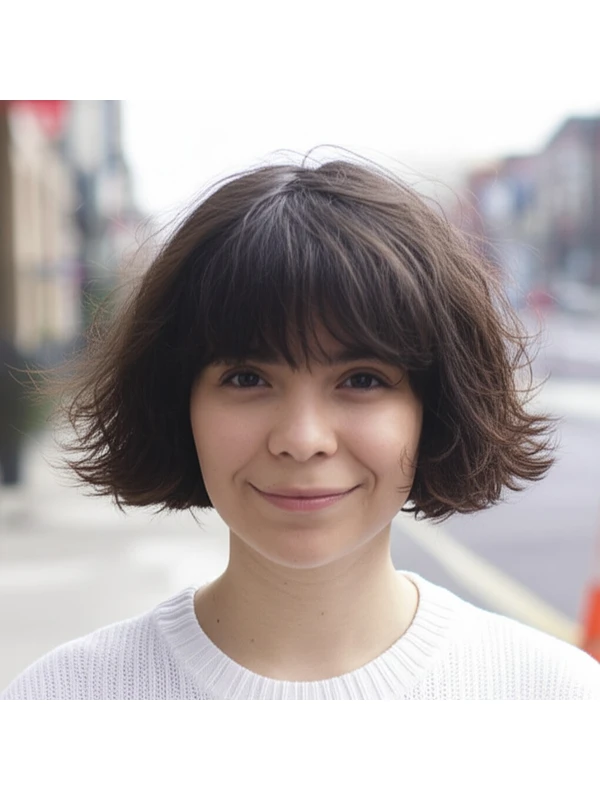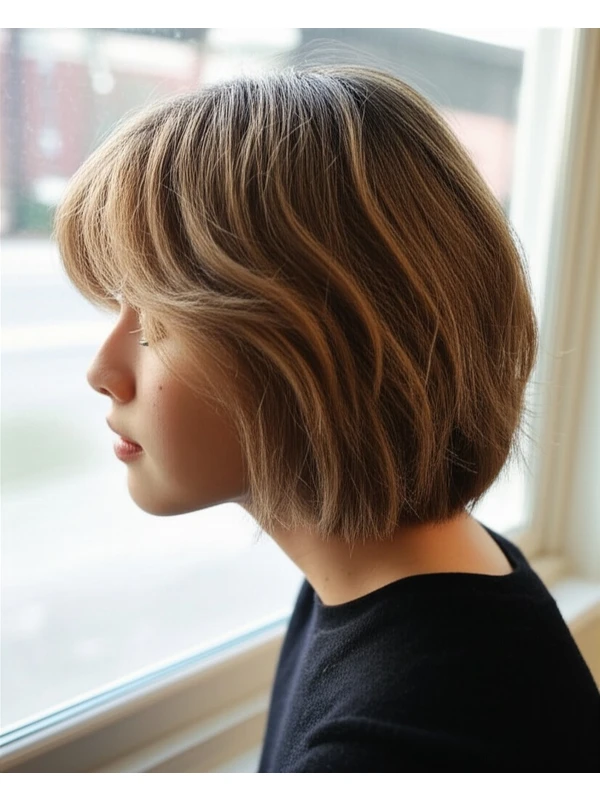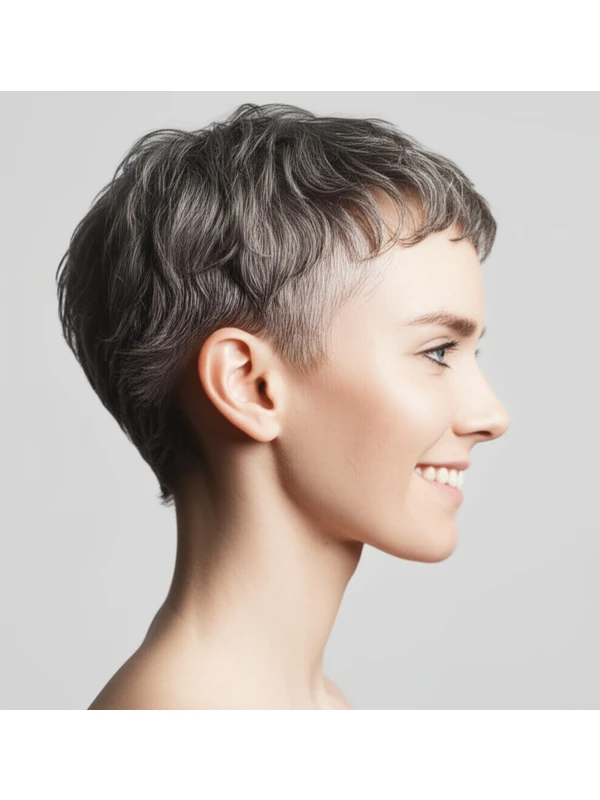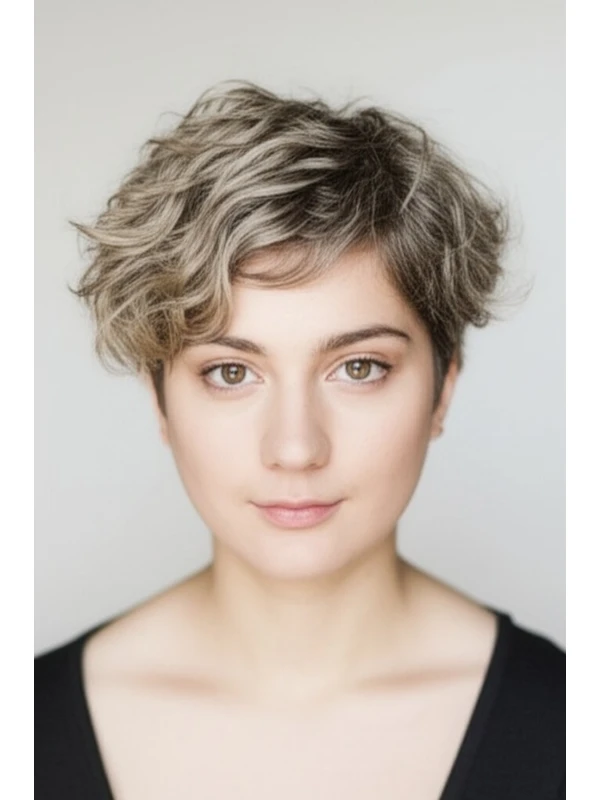#The Step Cut: A Modern Classic for Every Style
The step cut is a timeless hairstyle that’s enjoying a major resurgence! It's adaptable to almost any hair type and face shape, offering both structure and movement. This guide will break down everything you need to know about the step cut – from its origins to how to style it perfectly.
#1) Background & Definition: Understanding the Geometry
The step cut (also known as a layered bob or stacked haircut) gets its name from its distinct, stair-like layers that gradually decrease in length down the head. Imagine steps on a staircase - each layer is carefully crafted to create shape and volume.
- Key Features: Sharp, defined lines between layers; creates movement and texture; can be customized for various lengths and volumes.
- Typical Length Ranges: From chin-length bobs to shoulder-grazing styles or even longer. The key isn't the absolute length but how the layers are distributed.
- Alternative Names: Layered Bob, Stacked Cut, Tiered Haircut, Graduation (though graduation can have slightly different layering techniques).
#2) Face Shape Fit: Finding Your Perfect Balance
The beauty of a step cut is its adaptability! Here's how it works with various face shapes and potential fringe options.
- Oval: Lucky you! Almost any length or variation of the step cut will flatter an oval face. Consider longer layers for added movement. Fringe: A blunt, eyebrow-grazing fringe or soft, wispy bangs would both look fantastic.
- Round: The goal is to add verticality and elongate a round face. Opt for a shoulder-length or slightly longer step cut with angled layers that start higher up the head. Avoid chin-length cuts which can emphasize roundness. Fringe: Long, side-swept bangs soften the face and create asymmetry.
- Square: Soften strong angles with a step cut featuring softer, blended layers. A subtle graduation around the jawline helps to diffuse sharpness. Fringe: A textured fringe that blends seamlessly into the layers can be very flattering.
- Heart: Balance a wider forehead and pointed chin by choosing a step cut with volume at the sides. Avoid too much height on top which will accentuate the forehead. Fringe: Side-swept bangs or a soft, piecey fringe work well to soften features.
- Diamond: Similar to heart shapes, diamond faces benefit from styles that add width around the cheekbones and soften angles. A step cut with layers starting at the chin can be very effective. Fringe: A longer, softer fringe will help balance facial proportions.
- Oblong (Long): Add width and avoid elongating even further! Opt for a shorter step cut that hits just below the jawline or shoulder-length with more volume around the cheekbones. Fringe: A blunt, straight-across fringe can shorten the face visually.
#3) Body Proportions & Height Guidance: Tailoring to Your Silhouette
The length and placement of layers in a step cut significantly impact your overall appearance.
- Petite: Shorter step cuts (chin to shoulder-length) with strategic layering add volume without overwhelming a smaller frame. Avoid overly long styles that can visually shorten the neck.
- Average Height: Most lengths work well! Experiment with different layer placements to find what suits you best.
- Tall: Longer step cuts, grazing or extending past the shoulders, balance height and create a more proportional look.
- Narrow Shoulders: Layers around the face add visual width. Volume at the top of the head also helps broaden shoulder appearance.
- Broad Shoulders: Avoid excessive volume on top which can exaggerate shoulder width. Focus layering towards the ends to create movement without adding bulk.
- Short Neck: Shorter step cuts that hit above or around the collarbone are generally more flattering than longer styles, as they visually lengthen the neck.
- Long Neck: Longer step cuts with layers that fall past the shoulders can help balance a long neck.
#4) Works Best With Hair Types & Densities: Layering for Success
The beauty of this cut lies in its versatility across hair types and densities, but adjustments are often needed.
- Straight Hair: Step cuts look incredibly sharp and defined on straight hair, showcasing the clean lines of each layer.
- Wavy Hair: Layers enhance natural waves, creating bounce and movement. Be mindful that layers can sometimes lead to frizz - a good leave-in conditioner is key!
- Curly/Coily Hair: Step cuts add shape and definition to curls and coils, preventing the dreaded "triangle" head shape. Shrinkage: Remember that curly and coily hair shrinks as it dries – factor this into your desired length. A stylist experienced in cutting textured hair is essential.
- Fine Hair: Layers create an illusion of volume by removing weight. Avoid too many layers, which can make fine hair look even thinner.
- Medium Hair: The step cut works beautifully with medium density hair - you have enough body to support the layers without looking sparse or overly bulky.
- Thick Hair: Layering is essential for removing bulk and creating movement in thick hair. Consider more dramatic layering for a lighter, airier feel.
#5) Styling Variations: From Sleek to Textured
The step cut isn't just one look – it’s a canvas!
- Sleek vs. Textured: A sleek style uses smoothing products and heat styling for a polished finish. A textured style embraces natural texture with minimal product and air-drying or diffusing.
- Middle vs. Side Part: A middle part creates symmetry, while a side part adds softness and asymmetry.
- Fringe Variations: Blunt bangs, wispy bangs, curtain bangs, side-swept – the possibilities are endless!
- Occasion Styling: For casual days, embrace your natural texture. For office settings, opt for a sleek and polished look. For evenings, add waves or curls with a curling iron or hot rollers.
#6) Maintenance: Keeping Your Cut Fresh
Regular trims are key to maintaining the shape of a step cut.
- Trim Cadence: Every 6-8 weeks is typical, but depends on hair growth and desired style.
- At-Home Routine: Gentle shampooing, moisturizing conditioner, leave-in treatment (especially for wavy/curly/coily hair).
- Heat vs Air Dry: Minimize heat styling to prevent damage. Air drying or diffusing are healthier options.
- Product Checklist: Shampoo & Conditioner (suited to your hair type), Leave-In Conditioner, Heat Protectant (if using heat tools), Styling Cream/Gel/Mousse (for texture and hold).
- Estimated Daily Styling Time: 5-15 minutes, depending on desired style and hair type.
#7) Grow-Out Roadmap: Evolving Your Look
The step cut evolves beautifully as it grows out.
- Months 1-3: The shape is most defined. Regular trims maintain the layers.
- Months 3-6: Layers start to blend, creating a softer look. You can experiment with styling variations.
- Maintaining Shape: Between cuts, focus on hydrating your hair and avoiding split ends.
#8) Color Pairings: Enhancing Your Style
Color can amplify the impact of a step cut!
- Cool Undertones (ash blonde, cool brown): Cool tones enhance the sharpness and definition of the layers.
- Warm Undertones (golden blonde, warm caramel): Warm tones add dimension and richness to the style.
- Low-Commitment Options: Balayage or highlights create subtle contrast and depth without a drastic color change.
#9) Season & Occasion Guide: Adapting Your Style
- Spring/Summer: Lighter, airier styles with textured layers are perfect for warm weather.
- Fall/Winter: Deeper tones and smoother styling can add warmth and sophistication.
- Work: Sleek and polished – minimal fuss.
- Weddings: Romantic waves or curls enhance the elegance of a step cut.
- Parties: Experiment with bolder colors, textures, and accessories!
#10) Cost & Time: What to Expect at the Salon
- Salon Time: Typically 45-90 minutes for a basic step cut. More complex styles or color services will take longer.
- Price Range: Relatively moderate – expect a slightly higher price than a simple trim, but less than more intricate cuts.
#11) Pros & Cons: The Trade-Offs
Pros: Versatile, flattering on many face shapes, adds volume and movement, relatively easy to style (depending on your hair type). Cons: Requires regular trims, can be time-consuming to style if you desire a very specific look, layers can sometimes accentuate frizz in wavy/curly/coily hair.
#12) Salon Consultation Script: Questions to Ask Your Stylist
- "I'm interested in a step cut. Can you show me some examples of different lengths and layer placements?"
- “What length would best suit my face shape?”
- "How will the layers interact with my hair’s natural texture (wavy, curly, etc.)?"
- "Can we discuss fringe options that would complement my features?"
- "What products do you recommend for styling and maintaining this cut?"
- “How often should I come in for trims?”
FAQs: Your Step Cut Questions Answered
- Will a step cut make my hair look thicker? Layers can create the illusion of thickness, but they won't actually increase your hair density.
- Can I get a step cut with very short layers? Yes! However, extremely short layers can require more frequent trims and may not be suitable for all hair types.
- Is a step cut difficult to style at home? It depends on your skill level and desired look. A simple air-dried or diffused style is relatively easy; more polished looks require practice.
- Will the layers make my hair frizzier? Layers can sometimes accentuate frizz, especially for wavy/curly/coily hair. Using hydrating products and a diffuser can help minimize this.
- Can I get a step cut if I have very fine hair? Absolutely! Just be sure to avoid too many layers, which could make your hair look even thinner.
- How long does it take for a step cut to grow out? It depends on the length and how much you want to change the style. A significant grow-out can take 6-12 months.
